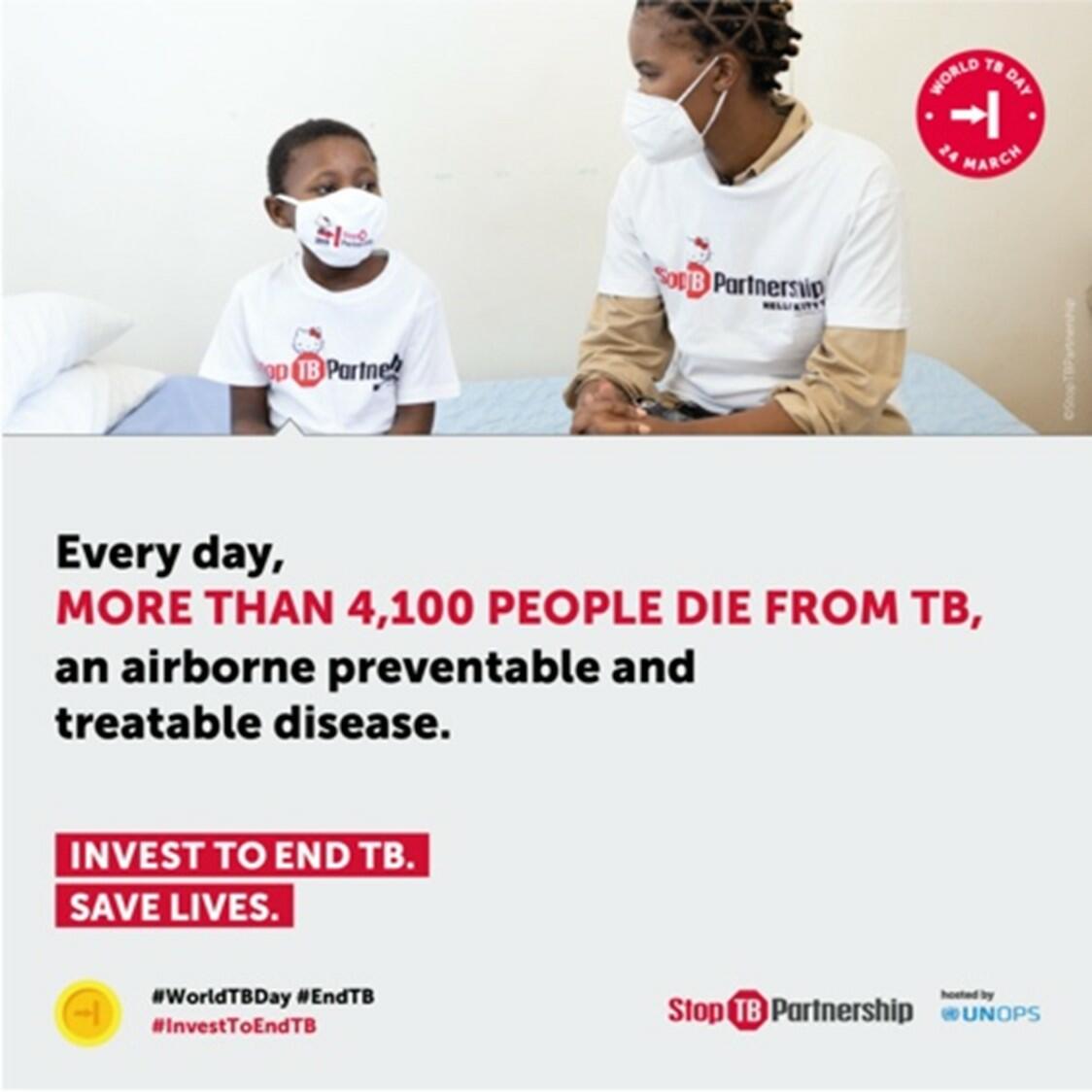
Tuberculosis (TB) kills 30 Ugandans every day. On March 24, Uganda’s National Tuberculosis (TB) and Leprosy Control Program joins the world to commemorate World Tuberculosis TB Day to raise public awareness about the devastating health, social and economic consequences of TB, and to step up efforts to end the global TB epidemic. This year’s theme is ‘TB kills 30 Ugandans Every Day - Invest in Ending TB, Save Lives.’
Globally, TB comes only second to COVID-19 as the leading cause of death by an infectious disease. In 2020, TB caused approximately 1.3 million deaths among HIV-negative people and over 200,000 deaths among people living with HIV. The COVID-19 pandemic has hampered the progress made in previous years towards ending TB primarily by limiting access to TB services. This has resulted in an 18% reduction in TB case detection and 8% increase in deaths compared to pre-pandemic levels. In Uganda, 30 people die from TB every day and it remains the leading cause of death among people living with HIV. Additionally, COVID-19 increased deaths among TB patients with the death rate among TB-COVID-19 co-infected patients being almost three times higher than general TB patients and over 25 times higher than COVID-19 patients.
By 2020, WHO End TB Strategy milestones set a target of reducing TB deaths by 35% from the 2015 baseline. Globally, the number of deaths reduced by 9.2% leaving an almost three-quarter gap to attaining the target. Although Uganda similarly failed to meet this target, it performed better with a 27% reduction in deaths from its 2015 baseline. Interventions that reduce the burden of TB have an impressive return on investment. The benefits per dollar spent on TB is estimated at over 40 dollars. If the 2035 End TB targets of a 95% reduction in TB deaths and a 90% reduction in TB incidence from their 2015 baseline levels are met, it is estimated that the benefits per dollar spent is between 16 to 82 making an attractive case for TB investments particularly among the poorest members of society.
Reducing the TB burden among groups that bear a disproportionate proportion of infections is bound to have ripple down effects on the number of deaths caused by TB. More cases of TB are among men than women who face significant barriers in accessing health care services and are under utilisers of available services compared to women. This means that men with TB often go undiagnosed and untreated and are missed by routine activities within the health system and continue to transmit the disease to their contacts within their families, communities and workplace. To accelerate declines in the number of TB deaths by reducing new TB infections and increasing TB detection, there is a need for the national TB program to recognise that men have a higher prevalence of TB and must develop and implement patient-centred strategies to address the unique barriers among men through gender-sensitive approaches across the TB care cascade of prevention, diagnosis, treatment and care.
LIGHT (Leaving no-one behind: transforming Gendered pathways to Health for TB) is a six-year cross-disciplinary global health research programme funded by UK aid, led by the Liverpool School of Tropical Medicine (LSTM) working with partners in Kenya, Malawi, Nigeria, Uganda and the UK. LIGHT aims to support policy and practice in transforming gendered pathways to health for those with TB in urban, HIV-prevalent settings to improve health, socio-economic and equity outcomes and to stop the spread of TB. Makerere University Lung Institute (MLI) is the LIGHT consortium’s partner in Uganda, and it will lead research in improving TB case detection using gender sensitive TB screening interventions in formal and informal healthcare systems. A review of the evidence found several factors that kept men away from accessing and utilising healthcare services such as the perception that healthcare visits will emasculate them, prioritisation of work obligations due to their position as household heads and providers as dictated by societal and cultural norms, TB stigma and lack of TB knowledge. Factors within the healthcare system such as long waiting times, inconvenient health facility working times that conflict with work schedules, negative staff attitudes and predominance of health services targeting women and children coupled with a lack of male friendly services contribute to delayed healthcare seeking leading to an extended period of undiagnosed and untreated TB among men.
We will conduct a pilot study to evaluate the feasibility, acceptability, potential effectiveness, and cost-effectiveness of a health facility-based TB screening intervention targeting men. Based on the barriers identified, we propose a health facility-based TB screening intervention targeting men comprising four components:

- Training participating health facilities in male-friendly services and TB screening
- Provider-initiated TB screening at all service delivery points with emphasis on men attending male-dominated service delivery points such as trauma and sexual reproductive health clinics
- Screening for TB among men accompanying women for antenatal care by incorporating provider-initiated TB screening in the antenatal male health service package and encouraging male partner involvement
- Sending screening forms to men in the lives of women and children receiving care from the health facilities for self-screening and linkage of symptomatic men to the healthcare facility for further evaluation
Evidence-informed gender-sensitive strategies are needed to respond to the unique barriers men face in Uganda in accessing the TB care they need within and outside the healthcare system. Our research aims to contribute to the body of evidence required for gender-equitable access to TB prevention and care to end TB and to reduce its socioeconomic consequences.
Authors: Jasper Nidoi, Justin Pulford, Rachael Thomson and Bruce Kirenga